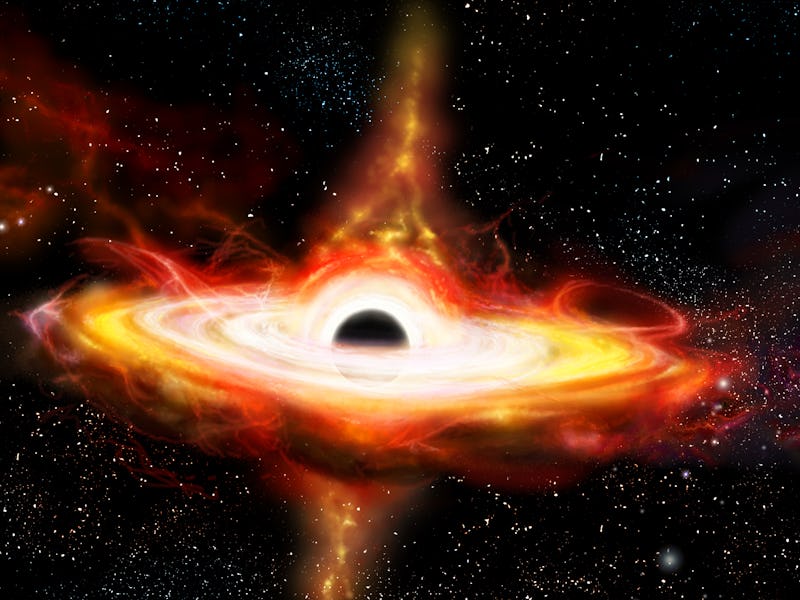Distant quasars reveal a surprising process that capped the first black holes' growth
A new analysis of the early universe shows quasars with growth capped by surrounding matter.

The first stars, black holes, and quasars emerged in the Epoch of Reionization, marking the universe's transition from its early undifferentiated hydrogen soup to something much more familiar. But with the mass of the universe uniformly distributed in a hot gas of neutral particles, what stopped the first black holes from simply consuming all matter?
Based on observations made with the ESO’s XSHOOTER instrument at the Very Large Telescope in Chile’s Atacama Desert, an Italian-led team of international astronomers suggest that feedback from the black holes’ formation process slowed down their growth, leading to the balance of matter that we know today. The results of the study were published today in Nature.
What’s new — Just 300,000 years after the Big Bang, the primordial soup of fundamental particles cooled enough for protons and electrons to form hydrogen, leading to an epoch known as the Dark Ages, where the universe was evenly filled with neutral hydrogen. Then, around 13 billion years ago, galaxies began to form, and supermassive black holes started swallowing extreme amounts of matter, creating powerful radiation and fast winds made of ionized particles.
But these winds were so powerful — with velocities about a sixth of the speed of light — that they cleared the gasses from the regions surrounding these black holes, stopping them from growing further.
At the same time, these winds introduced a tremendous amount of energy into the area surrounding the black hole, heating the undifferentiated gasses that made up the Dark Ages while clearing the region. Manuela Bischetti, a postdoc at the Italian Istituto Nazionale di Astrofisica in Trieste who led the analysis and writing of the paper, tells Inverse that “the abundance and the energy of these hot flows is a very important ingredient to understand the early phases of growth of most black holes and galaxies.”
Early galaxies may have been much different than what we’re used to today — dominated by their central black hole.
Why it matters — Bischetti and her team looked at 30 quasars from between 500 million and 1 billion years after the Big Bang, a time close to the Epoch of Reionization. Approximately half of the quasars the team targeted had these powerful outflows of particles. The extremely powerful winds created by these quasars created a feedback system that prohibited the further growth of black holes so that galaxies and black holes could grow together.
The galaxies that host these quasars are growing faster than other galaxies, which may indicate that this process marks the shift from the predominance of black holes in the early universe to the “symbiotic growth” of black holes and their host galaxies.
Understanding the relationship between quasar feedback, black holes, and the early universe’s shift to the growth of galaxies cannot be done with the kind of data the team used in this work.
What’s next — To understand how the earliest galaxies grew, astronomers need to look at much longer wavelengths. As Bischetti says, “the emission from the black hole is so powerful that it outshines the galaxy emissions” until just below the submillimeter wavelengths. To do this, they will use interferometers like the Atacama Large Millimeter/submillimeter Array.
Alternately, Bischetti notes, they can separate the emissions from the galaxy and the black hole by using a very high angular resolution, like the kind provided by NASA’s James Webb Space Telescope. This would allow astronomers to distinguish the outflows from the black hole from the emissions of the galaxy, allowing them to determine whether the feedback from the earliest quasars affected the growth of galaxies or merely that of the black holes devouring the early universe.